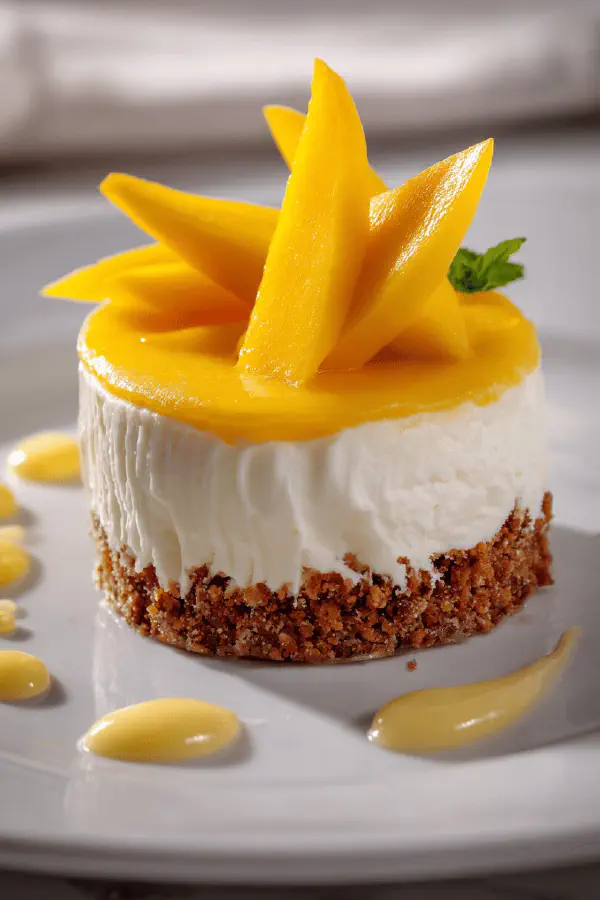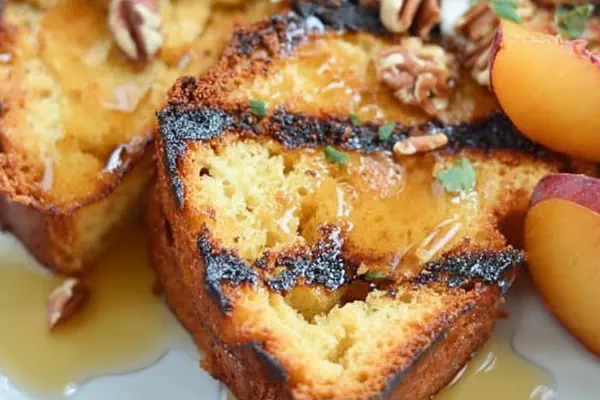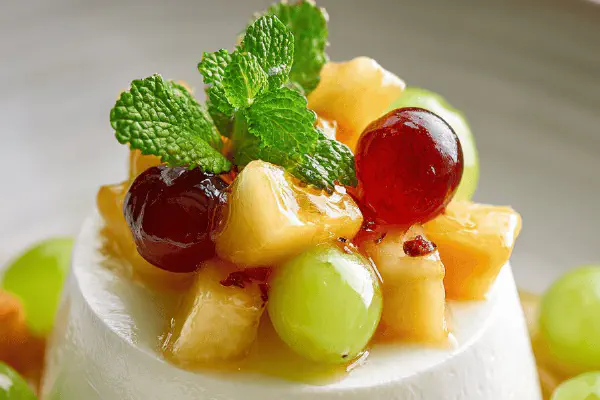Featured Recipe
Mango Yogurt Mousse Cake

By Kate
"
A light chilled cake with a crumbly base and airy mango mousse infused with Greek yogurt and whipped cream. The crust combines a mix of digestive biscuits and almond cookies for added texture and taste, bound with browned butter for richness. Gelatin sets the mango puree, which is gently folded with sweetened cream and tangy yogurt. Finished with rolled mango slices for a fresh fruity top. Timing cues focus on color and texture, avoiding strict timing. Silky mousse with crisp crust; layers balanced for contrast.
"
Prep:
45 min
Cook:
12 min
Total:
60 min
Serves:
8 servings
dessert
mousse cake
mango
yogurt
summer
Introduction
Starting with a crunchy, buttery base instead of just standard biscuits amps texture and flavor. Almond cookies add subtle nuttiness, browned butter deep richness—both elevate the crust beyond the usual press-and-bake. Mango’s natural sweetness balanced with Greek yogurt’s tang brings zing and lightness. Using a little less gelatin than typical keeps that mousse airy but stable, soft, never rubbery or chalky. Whipping cream with sugar to the right stiffness is key; too firm and it deflates when folded, too soft and mousse won’t hold. Rolled mango curls finish simple, colorful, add an elegant touch. The process is forgiving but understanding how set and texture change at each stage separates a messy wobble from a refined finish. Timing is secondary to visual and tactile cues here—an essential skill.
Ingredients
Crust
- 140 g digestive biscuits crushed fine
- 70 g almond cookies crushed fine
- 90 g unsalted browned butter melted
- 12 ml (2 1/2 tsp) powdered gelatin
- 40 ml (2 1/2 tbsp) cold water
- 400 ml mango puree strained
- 200 ml heavy cream 35% chilled
- 90 g caster sugar
- 200 ml Greek yogurt plain full-fat
- 1 ripe firm mango peeled thinly sliced
Mousse
About the ingredients
Digestive biscuits can be swapped with graham crackers if unavailable; almond cookies replaced with thin butter cookies or amaretti for flavor variation. Browned butter adds nuttiness, but melted unsalted butter at room temp suffices in pinch—expect deeper taste with brown butter. Caster sugar easily replaced with superfine or fine granulated sugar; avoid coarse as it won’t dissolve well in cream. Gelatin powder is essential for mousse firmness—agar agar is possible but needs different handling (heat longer, cooling times). Mango puree best made fresh but canned purees work; strain to remove fibrous bits for smooth texture. Greek yogurt should be full-fat to keep mousse creamy; low-fat versions cause separation and graininess.
Method
Crust
- Put rack mid-oven; preheat oven 175°C (347°F). Line 20 cm springform pan base with parchment, let overhang for easy removal.
- Crush digestive and almond cookies separately; combined fine but not powder. Melt butter until nutty aroma, amber color. Mix crumbs with butter evenly; press firmly onto bottom and halfway up sides.
- Bake 12 minutes; edges brown subtly, aroma toasted but not burnt. Cool until just warm—if cool, mousse won't set properly against crust.
- Sprinkle gelatin over cold water in small bowl; let hydrate 7 min, no stirring—it swells visibly.
- Heat mango puree in saucepan on medium low until steam rises but no boil—tiny bubbles at edges. Remove from heat; whisk in gelatin until fully dissolved. Hold at room temp about 20 min. Don’t chill or it gels prematurely.
- In chilled bowl, whip cream and sugar to soft peaks scolding later stiff peaks risk curdling when folded.
- Fold Greek yogurt into mango carefully until uniform, no streaks. Then gently incorporate whipped cream using wide spatula and folding motion to keep aeration.
- Pour mousse onto crust, tap pan softly for air bubble release, smooth surface. Refrigerate 3 1/2 to 4 1/4 hours until set but jiggle still damp—over-set mousse turns rubbery.
- Roll mango slices gently into spirals; arrange atop mousse. Run thin offset spatula or thin knife between cake and pan sides to loosen gently; use parchment to lift cake onto plate without cracking.
- Serve chilled; leftovers stable 2 days refrigerated well covered.
- Freeze step optional, thaw slowly in fridge overnight for cleaner slices but texture subtly shifts.
Mousse
Finish
Technique Tips
Hydrating gelatin dry then gently heating mango puree ensures smooth dissolution preventing grainy lumps or clumping. Never boil gelatin or it loses setting strength. Browning butter requires attention for aroma and color; take off heat just before dark brown spots appear. Crust pressed firmly packs crumbs tightly to avoid crumbling when sliced; don’t overbake or dry out or result crumbly base. Whipping cream is best done cold; sugar stabilizes peaks slightly but overbeating leads to grainy whipped cream that deflates easy. Folding technique crucial—use gentle under-over strokes, from bowl edge lifting to center to keep mousse airy. Set mousse in fridge uncovered or loosely covered smelling no odors; protect with cling film but not pressed tightly on surface to avoid condensation and soggy top. Wrapping mango slices over a wooden skewer before rolling aids shape retention. To release cake, running a butter knife between mousse and pan rim keeps sides intact—avoid digging or scraping harshly.
Chef's Notes
- 💡 Crust—use graham crackers for digestive biscuits. Almond cookies can be replaced with butter cookies. Pack crumb mixture tightly—avoids crumbling when slicing.
- 💡 Gelatin—always hydrate before adding to heat. Critical for texture. Too little, mousse collapses; too much, it’s rubbery. Use powdered gelatin; check if it’s fresh.
- 💡 Cream whipping—chilled bowl helps. Watch peaks; soft peaks, smooth mousse. Too stiff? Whipped cream deflates easily. But soft peaks won’t hold mousse.
- 💡 Mango puree—fresh is best; canned’s alright. Strain well to leave fibrous bits. Heat to steaming; cools quickly. Don't let it boil, or gelatin weakens.
- 💡 For serving—gently roll mango slices, keep them from breaking. Use parchment to lift cake out; prevents cracking. Perfectly chilled mousse is key; chilling takes time.
Kitchen Wisdom
What's the best way to store leftovers?
Air-tight container in fridge; last up to 2 days. Can freeze; but texture changes—thaw slow.
How do I troubleshoot grainy mousse?
Ensure gelatin dissolved fully; hydrate correctly. Avoid boiling mango puree, kills strength.
What if I want a firmer mousse?
Add a touch more gelatin, but test with small batches. Balance is tricky; too much makes rubbery.
Can I substitute low-fat yogurt?
Stick to full-fat; low-fat leads to watery mousse. Alters structure; keep it creamy for best results.



